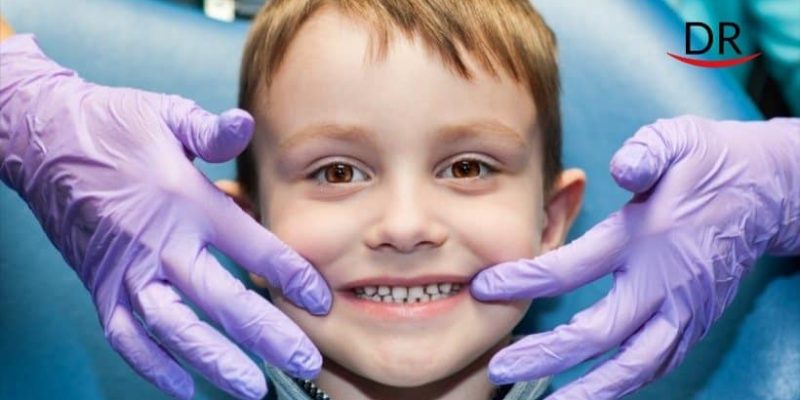Case Study
A 5 years old female patient presented to dental clinic with a chief complaint of pain in upper right and lower right, left back tooth region since 20 days.
History of Present Condition
Patient was completely asymptomatic 2 months back then she experienced pain in lower right and left back tooth region for which her parents approached a dentist in Amroha. Now, since 20 days she is experiencing pain in upper right and lower left, right back tooth region which was spontaneous in origin, intermittent type and patient required medicines to relieve the pain.
Pre-natal History, natal and post natal history was normal.
Nothing relevant reported in medical history.
Hard tissue examined and findings were as follows
Primary dentition was present with caries present in 52, 53, 54, 73 & 74 whereas 64, 75 & 85 was grossly carious and tender on vertical percussion. 75 also showed vestibular tenderness. The DMF score calculated was 9. Occlusion in molars was a flush terminal plane bilaterally while canines had a Class I canine relation bilaterally. The overjet and overbite recorded were 2 mm and 4 mm respectively.


Depending on clinical investigation, following provisional diagnosis was made
- Chronic irreversible pulpitis irt 64, 85.
- Chronic periapical abscess irt 75.
- Dental caries irt 52 53 54 73 74
Investigation: Radiographs were advised to confirm the diagnosis.

IOPAR irt 75 showed radiolucency involving enamel, dentine and pulp.
Depending on investigation, final diagnosis was made as
- Chronic irreversible pulpitis irt 64, 85.
- Chronic periapical abscess irt 75.
- Dental caries irt 52 53 54 73 74
Treatment plan
Extraction of 85 was done and patient was advised post extraction medication (Tab. Amoxicillin 250 mg B D for 3 days, Tab Ibuprofen 200 mg SOS) Oral prophylaxis was performed and oral hygiene instructions were given. For the corrective phase of treatment, GIC restorations were placed in 52, 53, 54, 83, 73, 74. Pulpectomy was performed in 64 & 85 followed by distal shoe space maintainer and extraction was done in 75 followed by distal shoe space maintainer. Patient was kept on periodic recall and follow up every 3 months.
Corrective Phase









Conclusion
- A dentist has to constantly evaluate the dental space requirements during the transition from primary to permanent dentition in a growing child. The space loss can lead to problems such as crowding, ectopic eruption and impaction.
- With the knowledge that is provided in the literature regarding the pattern of eruption and sequence the clinician can design an appropriate appliance for maintaining the space for premature loss of deciduous second molar. The ultimate goal is to develop a perfect and healthy occlusion in permanent dentition.
References
- Barberia E, Lucavechi T, Cardenas D, Maroto M. Free End Space Maintainers: Design, Utilisation and Advantages. J Paediatr Dent 2006; 31:5–8.
- Dhindsa A, Pandit I K, Modified Willet’s Appliance for Bilateral Loss of Multiple Deciduous Molars – A Case Report. J Indian soc pedod prevent dent 2008; 132-5.
- Wright G Z, Kennedy D B. Space Control in Primary and Mixed Dentition. DCNA 1978; 22(4):579-601.

















Comments